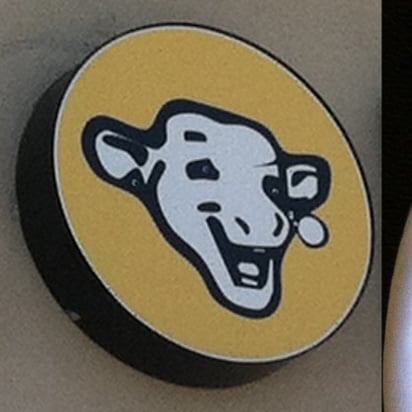American comedian Ron White frequently tells a story about how his van was damaged in a comedic way by the technicians at a Sears Automotive Center in Savannah, GA. This week, that Sears Automotive Center is being torn down. While the shopping mall that former Sears location is a part of is otherwise doing well, the Sears has been closed for years. The department store end-cap building and the car service center in its out-parcel property are being demolished to make way for the development of a new apartment complex.
A link to Ron preforming the story for a live audience.
so weird. sears was such a powerhouse… a pillar of retail for so long. it was legendary during my youth. kinda sad how it was sold off/collapsed piece by piece, department by department
What’s really amazing to me is they could have EASILY pivoted and become a mega online retailer like today’s Amazon. They literally had all the pieces already in place with their catalog/mail order/warehouses.
They probably would have been fine regardless of Amazon if they hadn’t been run into the ground by a libertarian econ major.
In 2008, Sears CEO Eddie Lampert decided to restructure the company according to Rand’s principles.
Lampert broke the company into more than 30 individual units, each with its own management and each measured separately for profit and loss. The idea was to promote competition among the units, which Lampert assumed would lead to higher profits. Instead, this is what happened, as described by Mina Kimes, a reporter for Bloomberg Business:
An outspoken advocate of free-market economics and fan of the novelist Ayn Rand, he created the model because he expected the invisible hand of the market to drive better results. If the company’s leaders were told to act selfishly, he argued, they would run their divisions in a rational manner, boosting overall performance.
Instead, the divisions turned against each other — and Sears and Kmart, the overarching brands, suffered. Interviews with more than 40 former executives, many of whom sat at the highest levels of the company, paint a picture of a business that’s ravaged by infighting as its divisions battle over fewer resources.
A close-up of the debacle was described by Lynn Stuart Parramore in a Salon article from 2013:
It got crazy. Executives started undermining other units because they knew their bonuses were tied to individual unit performance. They began to focus solely on the economic performance of their unit at the expense of the overall Sears brand. One unit, Kenmore, started selling the products of other companies and placed them more prominently than Sears’ own products. Units competed for ad space in Sears’ circulars…Units were no longer incentivized to make sacrifices, like offering discounts, to get shoppers into the store.
That ceo destroyed that company. I worked there for ten years and watched the damage that idiot did.
Hey he’s still chewing on 2billion from the good ol days.
Yeah we knew he would destroy the company, and he would use the fact that he was president/ceo/biggest investor to take apart the company and make a ton of money doing so. He claims to have lost money but I truly believe that is just on paper.
There’s nothing a little Ayn Rand can’t hurt.
Kenmore, started selling the products of other companies
This was a huge deal for consumers. Suddenly you had a powerhouse of home appliance sales and service, covering just about everything. When I was a kid, every time any appliance broke, I knew we’d head to Sears parts counter, look at the service manuals on microfiche (before the internet) and be able to get exactly what was needed and how to replace it.
It was so much more convenient than today where no one carries parts anymore, so even repairmen walk in, order the part, and have to be scheduled to come back.
They literally had all the pieces already in place with their catalog/mail order/warehouses.
They already screwed up however
In 1993, Sears discontinued its famous catalog to focus on in-store retail operations.
To fight off Walmart they got rid of all the shipping and things that made the catalog work in 1993 like the little outlet /pickup stores in small communities.
They focused on the physical stores and peaked in 2007 just in time for Amazon to take off. They no longer had all that distribution that gave up in 1993.
This is correct. And to add to this, not only did Sears employ a “retail first” model at precisely the wrong time, they continued to cling to it well past the time the writing was already on the wall that this was a dumb idea.
Sears did, of course, eventually have an online commerce web site just like everyone else. But the problem was Retail Firsttm! so their online pricing and selection was the same as their in store selection, i.e. significantly more expensive or limited than everyone else’s, or both. They also categorically failed to add third party vendors to their web site until a literal decade after Amazon and even Walmart did.
Ya, Amazon dominated by going from books to everything. However more importantly the put warehouses and distribution EVERYWHERE… It used to take 2-4weeks domestically to buy something mail-order or on line. It was amazon that got us down to 3 days, next day, then same day for online orders.
Back in 1993 Sears had this ability… I used to remember my mom shopping from the catalogue and driving in to the closest little Sears pickup location which where everywhere like little UPS stores etc. Hell further back in time you could order a house from Sears.
In hind sight, if Sears still had its credit division and distribution network it would have been able to take on modern online buy now pay later services and been able to out deliver amazon.
The problem for Sears, though, was the bottomless pit in the middle. Remember that Amazon famously did not turn a profit at all until 2001, operated at a complete loss by just setting investor money on fire for its first decade and a half of existence, and failed to actually generate meaningful profits and not just technical pennies on the dollar until 2004. Nobody actually expected them to succeed at first. Amazon wasn’t the company to beat, they were nobody. Walmart and Target were perceived as the “real” competition.
Throughout that entire period, a solid 20 years from 1995 to, say, 2005, Sears would have to remain profitable and solvent. And mind you that internet shopping didn’t really become a truly mainstream thing until the mid 2000’s. Sears would have had to maintain their catalog and logistics operations in perfect working order for two decades before online shopping finally took off and became truly mainstream, while managing not to go bankrupt in the process. Maybe they could have caused the online shopping revolution to happen a little sooner if they tried really hard in the 90’s, but overall it would have taken incredible planning, luck, and an amazing amount of foresight to make that happen. It would not be as simple as just not flipping the off switch in 1993.
Remember that Sears gave up on the majority of their famous catalog distribution model because it was no longer sufficiently popular or profitable. They put all their eggs in the mall basket, which to be honest coming from the perspective of the late 80’s and early 90’s probably looked like it made sense at the time.
Anecdotal, but no it didn’t make sense at the time, at least for customers. While I don’t know why my the catalog business wasn’t profitable, it was certainly popular in my family’s circle. For Christmas alone, it should have covered the year, or clothes at every change of seasons
Actually, the catalog was also a big driver of store visits, but maybe they didn’t know how to value that.
Coming from the early days of online shopping, they seemed to be in a perfect position where they already had the model and distribution, so they could have added online for very little additional cost and let it grow up
Same thing happened to Blockbuster, the giants never think their day will come
At least Blockbuster had the excuse of a major technology change that obsoleted their entire business. You could argue they should have foreseen that as they were consolidating the industry and done more to welcome new models, but they were doomed.
Sears could have been a contender. They had all the advantages and fell through their own bad vhoices
They were pumped and dumped into the ground.
And the Discover card.
And being a founding partner of Prodigy…
Another example is Montgomery Ward, who were among the first to do mail order and then pivoted to department stores. You’d think they’d see the advantage of it, but they failed even before Sears.
K-mart as well. Makes you wonder what end stage Amazon and Best Buy will look like…
I had a love-hate relationship with Sears for a long, long time. We’d always shop around for larger purchases, and quite often Sears would end up getting the sale, and then I’d have to put up with the salesperson bugging me about opening a Sears card and buying an extended warranty, and then being obstinate about taking NO for an answer. Of course, this was back when Craftsman Tools and Kenmore Appliances tended to be better than average. Hell, about 6 months ago we finally replaced a Kenmore refrigerator that we bought in '99. It’s currently cooling beer in my bro-in-laws garage. I’m still using Craftsman tools I bought 30+ years ago.
Yeah, even back in the nineties they were still making good stuff. My mom always bought my jeans there as a kid because they sold a store brand that had reinforced knees. I was an outdoor child and ran through clothing at an alarming rate.
Tough skins! Every kid in the 70s and 80s, until designer jeans became a thing for older kids






